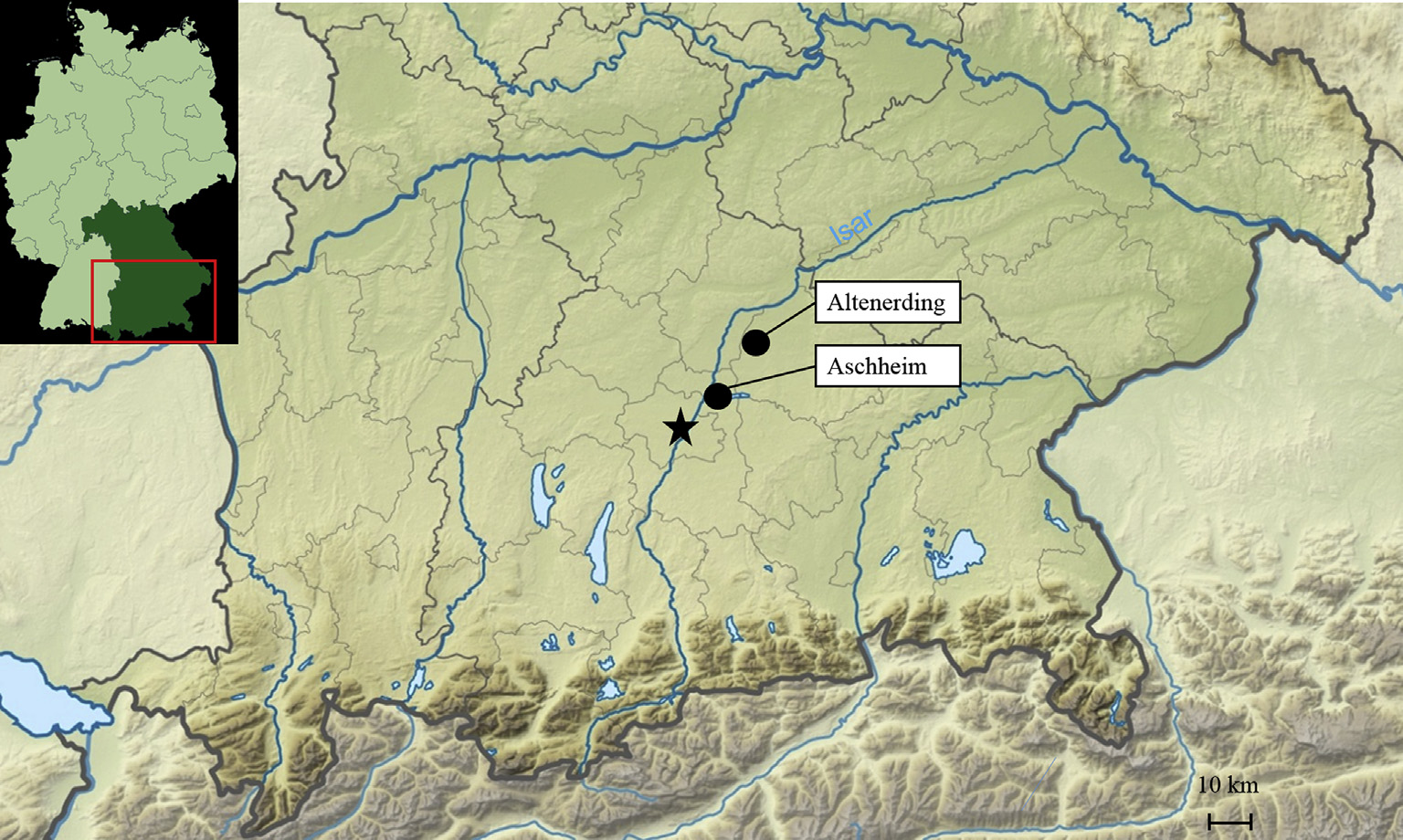New paper (behind paywall) Family graves? The genetics of collective burials in early medieval southern Germany on trial, by Rott. Päffgen, Haas-Gebhard, Peters, & Harbecka, J Arch Sci (2018) 92: 103–115.
Abstract:
Simultaneous collective burials appear quite regularly in early medieval linear cemeteries. Despite their relatively regular occurrence, they are seen as extraordinary as the interred individuals’ right to be buried in a single grave was ignored for certain reasons. Here, we present a study examining the possible familial relationship of early medieval individuals buried in this way by using aDNA analysis of mitochondrial HVR-I, Y-STRs, and autosomal miniSTRs. We can show that biological relatedness may have been an additional reason for breaking the usual burial custom besides a common cause of death, such as the Plague, which is a precondition for a simultaneous burial. Finally, with our sample set, we also see that signs of interaction between individuals such as holding hands which are often interpreted by archeologists as signs of biological or social relatedness, do not always reflect true genetic kin relationships.
Most of the burials studied are from the mid-6th and early 7th century, and all are from collective burials:
Of the simultaneous burials nine graves are proven or potential (due to contemporaneity) Plague burials (Feldman et al., 2016; Harbeck et al., 2013) and one grave is attributed to interpersonal violence against the background of the early medieval feud system (Schneider, 2008). The remaining simultaneous and the two successive burials did not reveal hints on their individuals’ cause of death.
The distribution of lineages includes R1b, R1a, and I (one family each) in Altenerding-Klettham, and T, R1b, and R1a (two families) in Aschheim-Bajuwarenring.

There were, for example:
A father and son R1a in a “warrior grave”:
Showing traces of perimortal sharp traumata (AE 888), both men seem to have died in succession of a physical conflict (Sage, 1984). It must remain open, whether this conflict was executed as a blood vengeance in connection with the medieval feud system (Schneider, 2008; Steuer, 2008) or any other kind of interpersonal violence. Attacks and interpersonal violence are also often believed to be a precondition for individuals being buried together.
It has been assumed that burials of several men with weaponry, so-called “warrior graves”, are burials which reflect the early medieval feud system (Schneider, 2008; Steuer, 2008) in the very sophisticated but implausible assumption, that women and children might have been spared in those conflicts. While feuds were actually struggles between familiae, friends and servants of a particular family could be also involved, which would explain the deposition of nonrelated individuals in such burials.
Two children, half-siblings, one of haplogroup R1b, in a shared coffin.
A non-genetic family of an elderly man of haplogroup I and a child being protected:
The early medieval concept of familia not only comprised the (biological) nuclear family and individuals certainly entered a family clan by marriage. This leaves room for any possible social (i.e. non-genetic) relation that may have allowed these two individuals to be buried in a common grave.
It is tempting for me to hail the mixed genetic pool among late Germanic tribes found in recent genetic studies, as I have done for Proto-Balto-Slavic territory and Iberia.
It is indeed possible that the mostly R1b-L11 and I1 subclades seen in late medieval West Germanic-speaking populations (and in modern West Germanic speakers) are in fact the result of later internal migratory flows and founder effects.
However, Bavarians – like the recently studied Lombards (with a predominance of R1b and I lineages), and especially Goths (apparently showing ‘eastern’ ancestry) – occupied territories of mixed ‘Barbarian’ populations after the invasion of the Huns and their allies, and settled near Slavs and Avars.
EDIT (18 MAR 2018). We should add here for this southern Germanic territory the Merovingian burials (ca. 7th c.) from Ergolding, with 3 samples of haplogroup R1b, and 2 samples of G2a, published by Vanek, Saskova, & Koch (2009).
Earlier, expanding Proto-Germanic tribes may not show this variable admixture and haplogroups we are seeing right now, though.
Related:
- Stone Age plague accompanying migrants from the steppe, probably Yamna, Balkan EBA, and Bell Beaker, not Corded Ware
- Genomic analysis of Germanic tribes from Bavaria show North-Central European ancestry
- Germanic tribes during the Barbarian migrations show mainly R1b, also I lineages
- mtDNA suggest original East Germanic population linked to Jutland Iron Age and Bell Beaker
- Admixture of Srubna and Huns in Hungarian conquerors
- The concept of “Outlier” in Human Ancestry (III): Late Neolithic samples from the Baltic region and origins of the Corded Ware culture
- Genetic prehistory of the Baltic Sea region and Y-DNA: Corded Ware and R1a-Z645, Bronze Age and N1c
- Bell Beaker/early Late Neolithic (NOT Corded Ware/Battle Axe) identified as forming the Pre-Germanic community in Scandinavia
- The Tollense Valley battlefield: the North European ‘Trojan war’ that hints to western Balto-Slavic origins
- Heyd, Mallory, and Prescott were right about Bell Beakers